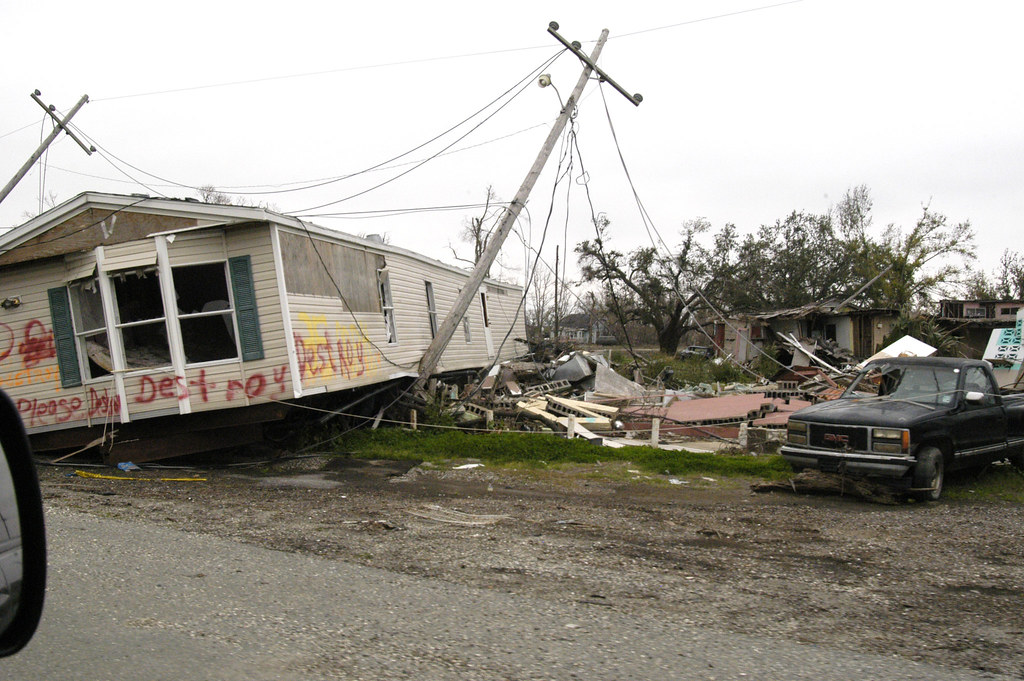Have a story idea
Have a story idea? Send it to us here.

Source : Flickr
January 4, 2023
Author : Alex Bustillos
America is taking measures to protect its citizens and infrastructure from the devastating impact of natural disasters like hurricanes.
On December 23, President Joe Biden signed the Water Resources Development Act of 2022, allowing the US Army Corps of Engineers to start building the Texas Coastal Protection and Restoration Project, aka the Ike Dike. It has been so named because of the catastrophic impact that Hurricane Ike left in its wake after storm surges destroyed Galveston Island, Bolivar Peninsula, and 26 other Texan counties.
The $34 billion plan includes constructing a system of sea gates, levees, and dunes in and around Galveston Bay to prevent tidal waves from entering the bay and Houston Ship Channel from the Gulf of Mexico.
The project's funding is not authorized under the defense bill. According to estimates released, Congress will need to approve $21.4 billion for the project separately, and the newly created Gulf Coast Protection District (GCPD) will need to pay nearly $13 billion.
The 87th Texas Legislature established the GCPD in 2021 to serve as the project's nonfederal sponsor. It is constituted of the counties of Chambers, Galveston, Harris, Jefferson, and Orange.
The project aims to build a coastal barrier that will shield the Gulf Coast and portions of Harris and Galveston counties from devastating storm surges brought on by natural disasters like hurricanes. According to the USACE, the initiative combines measures for mitigating and absorbing storm surges with ecological restoration for the region.
US Senator John Cornyn proposed legislation to allow the project that was ultimately incorporated into the military bill. https://twitter.com/JohnCornyn/status/1606478036651622402?s=20&t=3wpbss8X2UjlQAY9pQDJeQ
Cornyn explained, “The Coastal Spine will provide the critical infrastructure needed to protect our coastal communities and the industries that fuel our state and national economy".
Since it was first proposed 14 years ago, the estimated cost of a barrier project has increased. The initial version of the project suggested by Texas A&M University at Galveston professor Bill Merrell in 2008 was estimated to cost $3 billion. The cost had risen to $14 billion by 2018 when the USACE conducted a feasibility assessment for its larger project version.
The Army Corps expects that when the project is finished, it will prevent $2.2 billion in storm damage annually.
A $26 billion Seagate system that would be constructed between Galveston Island and Bolivar Peninsula is the most expensive component of the project. The gate would be big enough to let tankers, cargo ships, and other vessels enter the bay, but it could be closed in the event of a hurricane.
Other elements of the plan include creating a ring levee around the area of Galveston Island that is most densely populated, raising buildings on the western shore of Galveston Bay, and regenerating coastal ecosystems in other areas of the coast to offset the impact the barrier project would have on the local environment.
According to the Army Corps, engineers will spend at least another five years perfecting the barrier project's design and a further 12 years building the gates.
But how beneficial will the project be in withholding the onslaught of natural calamities? Well, only time will tell!
Until then, follow Contractor News for the latest updates on public projects.
Category : Federal Government Investment in Infrastructure Public Works
